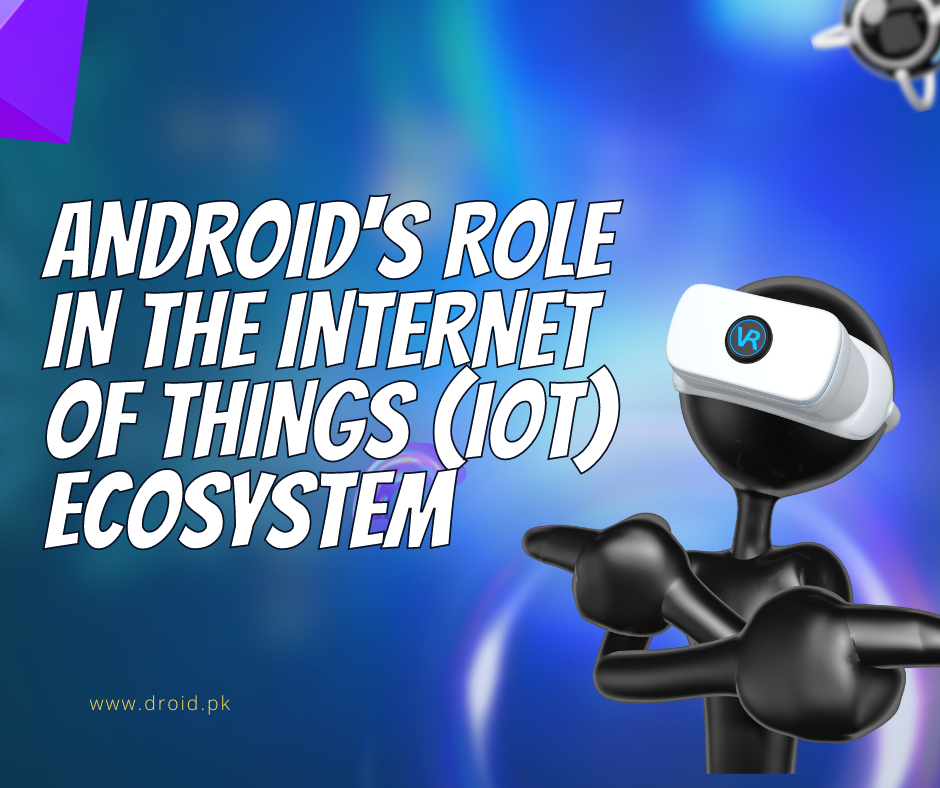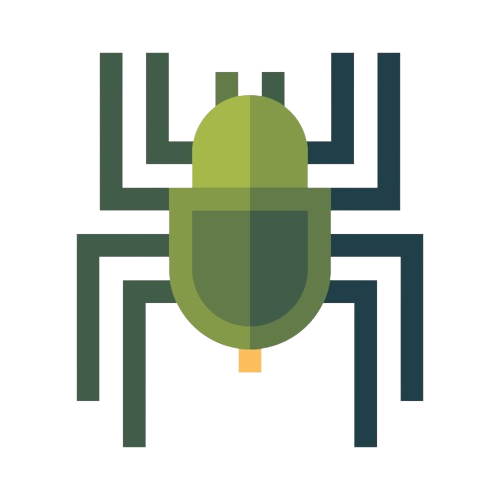
Android's Role in the Internet of Things (IoT) Ecosystem
Share

The Internet of Things (IoT) has transformed the way we interact with technology, connecting various devices and enabling seamless communication and automation. At the heart of this ecosystem lies Android, a versatile and powerful operating system that plays a crucial role in the integration and management of IoT devices. In this article, we will explore Android's significance in the IoT ecosystem, its integration with IoT technologies, real-world applications, challenges, and future trends.
The Internet of Things (IoT) refers to the network of interconnected devices embedded with sensors, software, and connectivity capabilities, enabling them to collect and exchange data. This interconnectedness allows for seamless communication and intelligent automation in various domains, including homes, industries, healthcare, and cities.
What is the Internet of Things (IoT)?
The Internet of Things encompasses a wide range of devices, including smart home appliances, wearable fitness trackers, industrial sensors, and autonomous vehicles. These devices are equipped with sensors and actuators that enable them to gather data, make decisions, and interact with the physical world.
Examples of IoT Devices
- Smart thermostats that adjust temperature based on occupancy and weather conditions.
- Connected security cameras that provide real-time surveillance and send alerts to homeowners.
- Industrial sensors that monitor machinery performance and predict maintenance needs.
- Health monitoring wearables that track heart rate, sleep patterns, and activity levels.
The Significance of Android in the IoT Ecosystem
Android, known primarily for its dominance in the smartphone market, has also become a prominent player in the IoT ecosystem. Its open-source nature, flexibility, and large developer community make it an ideal choice for IoT device manufacturers and developers.
Android as an Operating System for IoT Devices
Android offers a robust operating system platform that can be customized and tailored to meet the specific requirements of IoT devices. Its widespread adoption and compatibility with various hardware architectures make it a versatile choice for IoT manufacturers. Android provides a rich set of APIs and frameworks that simplify the development process and enable seamless integration with other IoT technologies.
Android's Flexibility and Customizability
Android's open-source nature allows device manufacturers to customize the operating system to their specific needs. This flexibility enables the development of IoT devices with diverse functionalities and form factors. Android can be optimized for resource-constrained devices, allowing for efficient operation even on low-power hardware.
Android's Integration with IoT Technologies
Android's integration with IoT technologies plays a vital role in establishing communication, processing data, and providing a user-friendly interface for IoT devices.
Connectivity and Communication Protocols
Android supports a wide range of connectivity options, including Wi-Fi, Bluetooth, NFC, and cellular networks. This versatility enables seamless communication between IoT devices and allows them to connect to the internet and interact with other devices in the network. Android's support for popular communication protocols like MQTT, CoAP, and HTTP simplifies the integration of IoT devices into existing ecosystems.
Data Processing and Analysis
Android's powerful hardware capabilities and support for efficient data processing enable IoT devices to perform complex computations and analysis locally. This capability is particularly beneficial in scenarios where real-time decision-making and quick response times are crucial, such as industrial automation or healthcare monitoring. Android's compatibility with machine learning frameworks also allows for intelligent data analysis and predictive capabilities on IoT devices.
User Interface and Interactivity
Android provides a rich user interface framework that allows IoT devices to present information, receive user input, and provide interactive experiences. With support for touchscreens, voice recognition, and gesture controls, Android-powered IoT devices offer intuitive and engaging interfaces for users to interact with.
Applications of Android in the IoT Ecosystem
Android's integration into the IoT ecosystem has paved the way for innovative applications in various domains.
Smart Home Automation
Android-powered devices serve as the central control hub for smart homes, enabling users to control and automate various connected devices. From adjusting lighting and temperature to managing security systems and home entertainment, Android provides a seamless and intuitive interface for controlling IoT devices within a smart home ecosystem.
Industrial IoT
Android's robustness and flexibility make it well-suited for industrial IoT applications. It enables real-time monitoring and control of machinery, remote asset management, predictive maintenance, and data analytics for optimized operations. Android-powered devices can collect sensor data, monitor equipment performance, and provide actionable insights for efficient industrial processes.
Healthcare and Wearable Devices
Android plays a crucial role in the development of healthcare and wearable devices, empowering users to monitor their health and well-being. From fitness trackers to smartwatches and medical monitoring devices, Android-based wearables enable real-time health tracking, medication reminders, and personalized healthcare management.
Smart Cities and Infrastructure
Android's integration into IoT infrastructure enables the development of smart cities. Android-powered devices can be utilized for intelligent transportation systems, environmental monitoring, waste management, and energy efficiency. These devices collect and analyze data to optimize urban services, enhance public safety, and improve the overall quality of life.
Challenges and Considerations for Android in the IoT Ecosystem
While Android offers numerous benefits for IoT devices, there are several challenges and considerations that need to be addressed.
Security and Privacy Concerns
As IoT devices become more interconnected, ensuring robust security and privacy becomes paramount. Android device manufacturers and developers must implement strong security measures, including encryption, secure communication protocols, and regular software updates to protect against vulnerabilities and unauthorized access.
Device Compatibility and Fragmentation
Android's open-source nature has led to device fragmentation, with various manufacturers customizing the operating system to their specifications. This fragmentation can present challenges in terms of compatibility and updates, as different devices may have different capabilities and software versions. Developers need to consider these variations when creating IoT applications to ensure optimal performance and compatibility across a range of devices.
Scalability and Performance
IoT ecosystems often involve a large number of interconnected devices. Ensuring that Android-powered IoT solutions can scale and handle the increasing volume of data and devices is crucial. Optimization techniques, efficient resource management, and cloud-based solutions can help overcome scalability challenges and ensure reliable performance.
Future Trends and Innovations
The future of Android in the IoT ecosystem holds promising advancements and innovations that will shape the way we interact with connected devices.
Edge Computing and AI Integration
The integration of edge computing and artificial intelligence (AI) technologies with Android-powered IoT devices will enable real-time data processing and decision-making at the network edge. This approach reduces latency, enhances privacy, and enables intelligent automation without relying heavily on cloud connectivity.
Standardization and Interoperability
Standardization efforts in the IoT industry aim to establish common protocols and frameworks that enable seamless interoperability between devices and platforms. Android's compatibility with industry standards and its participation in these standardization initiatives will promote greater interoperability and simplify the integration of diverse IoT devices.
Enhanced User Experience
Android will continue to enhance user experiences in the IoT ecosystem through intuitive interfaces, voice commands, and natural language processing. As voice assistants and AI-powered technologies advance, Android-based IoT devices will provide more personalized and context-aware experiences for users.
Android's role in the Internet of Things (IoT) ecosystem is significant and far-reaching. As an operating system, Android provides the foundation for IoT devices, offering flexibility, customization, and powerful capabilities. With its integration with IoT technologies, Android enables seamless connectivity, data processing, and user interactions. From smart homes to industrial automation, healthcare to smart cities, Android empowers innovative applications in various domains. However, challenges such as security, device fragmentation, and scalability need to be addressed for the full potential of Android in the IoT ecosystem to be realized. As we look to the future, advancements in edge computing, AI integration, and standardization will further enhance the role of Android in shaping the IoT landscape.
FAQs
-
How does Android contribute to IoT security? Android implements various security measures such as encryption, secure communication protocols, and regular software updates to protect IoT devices from vulnerabilities and unauthorized access.
-
Can Android devices control multiple IoT devices simultaneously? Yes, Android-powered devices can control multiple IoT devices simultaneously through connectivity protocols like Wi-Fi and Bluetooth, providing a centralized interface for managing IoT ecosystems.
-
Are there any limitations to using Android in the IoT ecosystem? Some limitations include device fragmentation, compatibility challenges, and the need for efficient resource management to ensure scalability and performance in large-scale IoT deployments.
-
What are some examples of Android-based IoT applications? Examples include smart home automation systems, industrial monitoring and control solutions, healthcare wearables, and smart city infrastructure management systems.
-
How does Android handle IoT data privacy? Android incorporates privacy features such as permission control, user data encryption, and secure communication protocols to protect IoT data and ensure user privacy.
